Where Is Lake Tuz in Turkey and How Was It Formed? Discover Its Unique Nature and Wildlife
Lake Tuz is the second-largest lake in Turkey after Lake Van and the second saltiest lake in the world. It meets 70% of Turkey's salt needs. The average depth of Lake Tuz is below 50 cm. Lake Tuz is home to 85 species of birds, 129 insect species, 4 of which are endemic, 15 mammals and 38 endemic plant species. There are about 6 thousand bird nesting areas in the lake. It is a Class A wetland according to international criteria and an important wetland for the protection of biodiversity in Turkey. Lake Tuz is included in the World Heritage Tentative List by UNESCO. So, where is Lake Tuz? What makes Lake Tuz special? Are there any fish in Lake Tuz?
Let's explore the things to see while visiting Lake Tuz and learn more about the formation of Lake Tuz...
Where is Lake Tuz?

Lake Tuz is a large salt lake located between Ankara, Konya and Aksaray provinces of Turkey. It is located in the Central Anatolia Region, in the central region of Turkey. Geographically, the lake is bordered by Ankara to the east, Konya to the west and Aksaray to the south. Lake Tuz is the second-largest salt lake in Turkey and an important source of salt production.
Lake Tuz, which is also a region of touristic interest, offers a variety of experiences to its visitors. Activities such as salt rooms, sculptures made of salt, salt therapy and informative tours about the health benefits of salt are organised in the region. In addition, the natural beauties and historical sites around Lake Tuz also attract visitors.
How to Visit Lake Tuz?
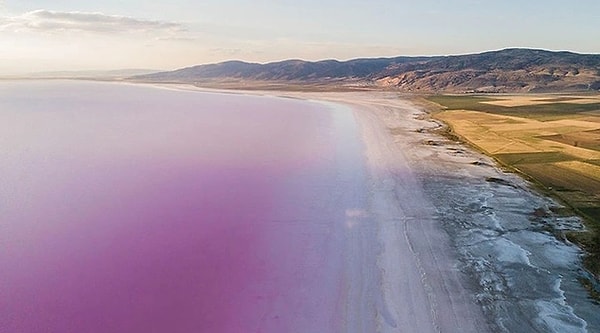
The lake is easily accessible from Konya, Ankara and Aksaray. Visitors passing through the Ankara-Konya highway can easily reach the lake by car. In the lake, which dries up in the summer months, a natural salt layer is formed, and it is possible to walk on the surface of the lake. The natural road passing through the middle of the lake is used for salt extraction activities. There are also underground natural gas storage facilities in the region.
What You Need to Know About Lake Tuz
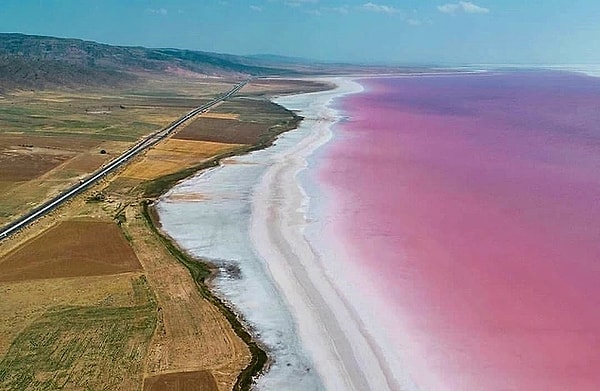
Lake Tuz is the second-largest lake in Turkey after Lake Van. As it is a closed basin, the water level changes seasonally. Peçenek, Karasu, İnkuyu, Kırkdelik, and Melendiz streams are the main sources that feed the lake, but most of these streams dry up in summer. Therefore, while the lake has a large water surface in winter, it evaporates in summer and turns into a white salt desert. The lake reaches a maximum depth of 1.5 meters, especially in spring, and is 40 cm deep on average for most of the year.
Thanks to its shallow structure, you can walk on the lake and walk barefoot on the salt; however, it is not suitable for swimming. Facility facilities are quite limited. In the summer months, especially in July and August, some parts of the lake may take on red or pink tones. This is because the algae producing beta-carotene change colour to protect themselves from the sun.
Features of Lake Tuz
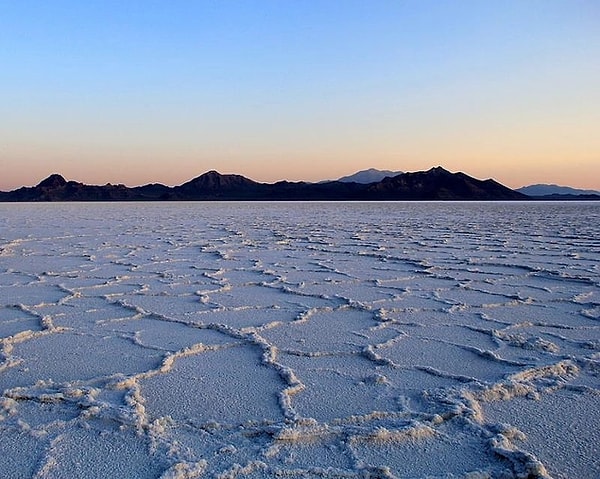
Approximately 40% of Turkey's salt need is met from Lake Tuz. Salt formation occurs when the water coming with precipitation seeps underground, dissolves the salt and carries it to the surface. The lake area shrinks during periods of low rainfall.
Length: 80 km
Surface Altitude: 905 m
Average Depth: 2 m (rarely exceeding this level throughout the year)
Surface Area: 1,665 km²
Basin Area: 11,900 km²
In summer, especially in July, the water recedes completely and the lake turns into a salt desert. The lake is very shallow; in summer there is not enough water on the surface to walk from one end to the other. Thanks to the high salt content, the lake does not freeze in winter.
The lake, which had ice blue and white tones in the past, started to take on off-white and red colours as the water level dropped.
Streams feeding Lake Tuz:
Pecheneg Stream
Melendiz Stream
Insuyu Stream
Karasu Stream
Kirkdelik Stream
Some of these rivers dry up in the summer, but revive during the rainy season.
When to Visit Lake Tuz?

Tuz Lake offers different views at every time of the year. You can determine your visit time according to your expectations:
Spring (March-May): Ideal for hiking and bird watching thanks to the mild weather and revitalised nature.
Summer (June-August): This is when the lake is at its most impressive. The water recedes, the salt layer becomes more pronounced, and the lake turns into a white desert. It is the most popular time to take photos and enjoy the scenery.
Autumn (September-November): It offers a comfortable trip with its cool and calm weather. The lake surroundings take on autumn colours.
Winter (December-February): There is a calmer and colder atmosphere. Although activities are limited, it offers a different experience for those who love the silence of nature and winter scenery.
Diversity of Life in the Lake Tuz
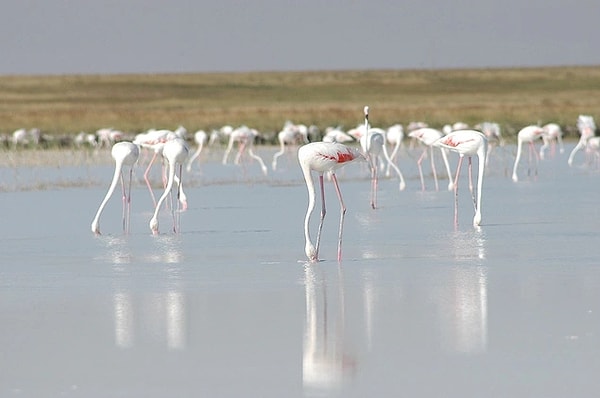
Despite its high salt content, Lake Tuz is home to adapted life:
Microorganisms: Halophilic (salt-loving) bacteria and archaea make up the microbiological diversity of the lake. These creatures are the most resilient inhabitants of saltwater.
Saltwater Plants: Salt-tolerant plants grow around the lake. Common species include salt grass (Salsola spp.), salt sage (Suaeda spp.) and Halocnemum.
Water Birds: Migratory birds such as flamingos, pelicans, gulls and cormorants can be observed in the lake. Especially the spring and fall periods are ideal for bird watching.
Vertebrates: Fish diversity is limited due to the excessive salinity in the lake. However, some freshwater fish can be found in the surrounding rivers and freshwater areas.
How was the Lake Tuz formed?

Just like the natural formations of Cappadocia, Lake Tuz is the product of thousands of years of geological processes. The pits formed between the surrounding plateaus during the Neogene period filled with underground waters and became lakes. These waters dissolved the salt layers under the ground and caused intense salt accumulation at the bottom of the lake. The lake, which owes its white appearance today to this formation process, occasionally turns pink or ice blue on its surface. This change is caused by salt-loving algae growing on the water's surface.
The Legend of Lake Tuz
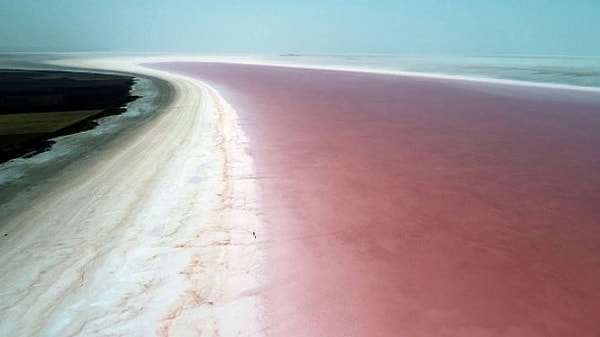
According to legend, Lake Tuz was once a fertile region surrounded by vineyards. One day, a tired monk asked an old woman he met here for a bunch of grapes. However, the woman lied, saying “There were no grapes this year”, even though the vineyard was full. So the monk cursed her, “May you turn to salt and ice”. From that moment on, the garden turned to salt, and the old woman turned to stone. The lake as it is today is based on this legend.
What to do in Lake Tuz?

In summer, especially in July, the lake waters recede and only salt remains on the surface. Since the depth does not exceed 3-4 cm, visitors can walk barefoot, which offers a very relaxing experience. Many people with conditions such as rheumatism and arthritis prefer this place in search of health.
Many bird species live in the reeds around the lake. Cılıbıt, suna, gull, goose, duck and Turkey's largest flamingo colony can be seen here. Flamingos feed on “salty shrimp” that live in the lake. This region is also very attractive for bird watchers and nature photographers.
Lake Tuz offers unique views at sunset. It is a preferred place for photographers and wedding shoots, especially in summer. Entrance is free of charge.
What are the Benefits of Lake Tuz?

The 22 minerals found in Lake Tuz provide benefits against skin conditions such as foot odour, fungus and eczema. The peeling effect of salt is also preferred in skin care. For this reason, products obtained from the lake are very popular.
Lake Tuz Traveler Reviews

Travellers who visited Lake Tuz were very satisfied with the natural beauty of the region and the unique experiences it offers. Here are some remarkable comments:
'It was a great experience!'
I had a natural body and face scrub by walking barefoot in Lake Tuz. I was very pleased with the salty care products I bought from the lake. The souvenir options were also very nice.
'Stunning views and relaxing atmosphere...'
The whiteness and calmness of the lake was mesmerizing. There are also souvenir shops, cafeterias and social areas in the area. Ideal for those who want to spend a peaceful day in touch with nature.
'A one-of-a-kind natural wonder.'
I think Lake Tuz is important both in terms of aesthetics and health. There have been scientific researches that the salts in the lake are beneficial for human health. It is worth seeing!
'A different beauty at sunset!'
When we visited, the lake was completely covered with salt. We were able to walk on it comfortably. Especially the moments we spent with the sunset were unforgettable.
Keşfet ile ziyaret ettiğin tüm kategorileri tek akışta gör!

Send Comment